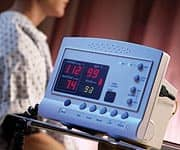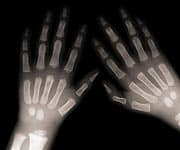Life Extension Magazine®
A review of the published scientific literature reveals that DHEA (dehydroepiandrosterone) may be the best-validated anti-aging supplement currently available. Brand-new studies indicate that DHEA is even more effective than previously demonstrated. DHEA was introduced to Americans by the Life Extension Foundation in 1981. For nearly two decades, a battle raged between health freedom activists who wanted free access to DHEA and government bureaucrats who wanted to ban it. The tide turned in 1996, after two Life Extension members were arrested for importing DHEA for personal use. Attorneys hired by the Life Extension Foundation proved that DHEA was not a controlled substance and was indeed perfectly legal to buy and sell. The last two years have produced a torrent of positive research findings concerning DHEA. As most members know, DHEA is abundantly produced in healthy young adults, but its levels decline dramatically with advancing age,1,2 coinciding with the onset of numerous diseases of aging.2-7 While DHEA’s demonstrated anti-aging benefits have made it a popular supplement, powerful new evidence supports DHEA’s critical role in alleviating depression,8,9 enhancing endothelial function,10-12 preventing atherosclerosis,13-15 increasing bone mass,16-18 slowing osteoporosis,16-18 improving insulin resistance,19,20 and even hastening wound healing.21,22 Despite its ever-growing list of health benefits, however, DHEA remains under political attack. Its frequent mischaracterization as an “anabolic steroid” has led some in Congress to call for outlawing DHEA. Fortunately, thanks to the concerted efforts of key lawmakers and champions of health freedom, DHEA remains readily available to all health-conscious adults who seek to reap its far-ranging, multifaceted benefits. DHEA Supports Mood and Sexual FunctionIn just the last two years, researchers have published exciting new findings that underscore DHEA’s value in alleviating depression, improving sexual function, and managing the symptoms of schizophrenia.
Building on earlier results pointing to DHEA’s promise in treating major depression,9 in 2005 researchers conducted a double-blind, placebo-controlled trial of 46 men and women with major or minor depression.8 The subjects received 90 mg of DHEA per day for three weeks and 450 mg per day for an additional three weeks. Treatment with DHEA produced dramatic gains on standard depression rating scales, with half the subjects showing a 50% or greater improvement. The DHEA-supplemented subjects also recorded significant improvements on a score of sexual function. The researchers concluded that DHEA is effective in treating depression when used in the absence of prescription antidepressants.8 DHEA’s effects in combating depression were further confirmed in a study published in early 2006. Scientists treated 145 HIV-positive patients showing signs of depression with either DHEA at a dose of 100-400 mg per day or a placebo.23 Outcomes were measured using standard depression rating scales. DHEA proved superior to placebo in alleviating depression, with 56% of the DHEA-treated patients showing improvement compared to 31% in the placebo group.
Sexual function is closely linked with emotional health and well-being, and scientists now know that DHEA levels are strongly associated with healthy sexual function. Two notable studies from 2005 found that sexual function24 and overall self-reported health and functional status25 were better among women with relatively high levels of DHEA-sulfate (DHEA-S). Even low-dose DHEA supplementation may be effective in providing these benefits. For example, in a group of women with systemic lupus erythematosus, daily doses of DHEA as low as 20-30 mg improved health-related quality of life and sexual interest and activity compared to placebo.26 Other researchers have reported notable improvements in libido and mood in women who supplemented with DHEA.27,28 Even more promising are several recent studies from 2005 suggesting that, in addition to its positive impact on depression and sexual function, DHEA may help to manage symptoms of schizophrenia. Based on their preliminary findings demonstrating DHEA’s efficacy in reducing symptoms of schizophrenia,29 researchers further noted improvement in illness severity and anxiety in a group of schizophrenic patients who received DHEA in addition to their anti-psychotic medications.30 The study authors attributed this specific anxiety-reducing effect to DHEA’s influence on the brain’s GABA receptors, which are central to regulating mood.30 DHEA Protects Arteries, Promotes Cardiovascular HealthExtremely positive findings about the cardiovascular benefits of DHEA were reported in the Massachusetts Male Aging study. Researchers confirmed that men with higher DHEA-S levels were less likely to have heart disease,13 suggesting a valuable role for DHEA in averting the nation’s leading cause of death. Additionally, higher DHEA levels seem to positively affect endothelial cell signaling, which could have important implications for avoiding heart disease. In a subset of men from the Baltimore Longitudinal Study of Aging,14 levels of hormones (including DHEA-S) were measured and correlated with arterial stiffness, as measured using ultrasound imaging of the carotid arteries. Men with higher levels of total and free testosterone and DHEA-S had less stiffness of the arteries, indicating a decreased risk of cardiovascular events such as heart attacks. A similar link between low serum DHEA-S levels and greater risk for carotid artery disease was demonstrated last year in a study of young women with polycystic ovary syndrome, a condition associated with an increased risk of cardiovascular disease and metabolic syndrome.15
A study in animals in 2006 shed further light on how DHEA promotes cardiovascular health.34 Researchers fed young and old female mice a daily DHEA-S supplement. After 60 days of treatment, the investigators measured the stiffness of the test animals’ left ventricle, the heart’s major pumping chamber. The DHEA-S-supplemented older mice had decreased left ventricular stiffness compared to the non-supplemented older animals. The scientists concluded that DHEA-S supplementation is capable of reversing the left ventricular stiffness that accompanies aging, thus promoting youthful structure and function in the heart’s tissues. Another animal study simulated the depressed cardiovascular function (shock) that follows major trauma.35 Researchers gave male rats doses of a DHEA metabolite. This treatment reversed the depression of cardiovascular function and organ blood flow induced by shock. Scientists were able to measure that plasma levels of the inflammatory cytokine interleukin-6, which had been elevated in the state of simulated shock, were promptly reduced by treatment with the DHEA metabolite. The investigators concluded that treatment with a DHEA metabolite could be valuable in restoring cardiovascular function and correcting abnormal cytokine levels. Furthermore, investigators determined that DHEA-S injected directly into the coronary arteries of pigs produced acute dilation of the blood vessels, with associated increases in coronary blood flow.36 DHEA Improves Blood Flow and Endothelial FunctionStrong new evidence indicates that DHEA and DHEA-S help protect aging adults against atherosclerosis and its life-threatening consequences such as coronary artery disease.10,11,37 Several mechanisms of action may account for these benefits. In one blind, placebo-controlled trial, 24 older men orally ingested 50 mg of DHEA or a placebo at bedtime for two months. The researchers then measured arterial dilation and increased blood flow. While the placebo-treated subjects had no changes in any of the parameters measured, the DHEA-treated men experienced increased levels of a substance that helps blood vessels to dilate, as well as decreasing levels of a marker for blood clotting. They also had lower levels of artery-clogging low-density lipoprotein (LDL) after treatment than did the controls. The researchers concluded, based on the beneficial effects of short-term DHEA treatment, that long-term DHEA supplementation may prevent atherosclerotic changes caused by falling levels of vessel-dilating biochemicals.37
Previous studies have shown that platelet levels of an important vasodilating agent decrease with age, apparently due to the diminished efficiency of enzyme systems that are involved in their production.10 These changes may also influence platelet “stickiness,” which tends to increase with age. These tendencies toward decreased vasodilation and increased platelet aggregation over time may be defining features of the relationship between impaired endothelial function and atherosclerosis.12 A study in 2003 investigated the effect of DHEA supplementation (25 mg per day) on endothelial function, an instigating factor in the development of atherosclerosis.11 The investigators examined how the diameter of the large artery in the upper arm known as the brachial artery responded to blood-flow demands in DHEA-treated and placebo-treated men. Significantly, researchers found increases in blood vessel dilation—and therefore increased blood flow—in the DHEA-supplemented group. As in the study just described, investigators also found decreased plasma levels of a clotting agent in the treatment group. Finally, plasma glucose levels decreased significantly and safely in the treated group compared to controls. According to the authors, low-dose DHEA supplementation improved endothelial function, increased insulin sensitivity, and decreased blood-clotting tendency11—all factors that may slow the development of numerous age-related disorders, including heart disease and metabolic syndrome. | |||||||
DHEA Helps Prevent Age-Related Bone Loss and OsteoporosisRecently, new side effects were announced for the popular osteoporosis drug known as Fosamax®. Apparently, many Fosamax® users find themselves with the troubling condition known as osteonecrosis of the jaw, in which the jaw bone essentially dies.39 Unfortunately, those experiencing osteoporosis are presented with little choice other than to take the drug and hope for the best. Now, strong evidence suggests that ensuring optimal levels of DHEA may help to slow bone loss and guard against the crippling effects of osteoporosis.
Studies of both men and women have demonstrated that low levels of DHEA are associated with bone loss through mechanisms related to altered mineral absorption and metabolism, as well as through inflammatory processes.40-42 In younger people, normal DHEA levels stimulate adequate production of a substance called insulin-like growth factor 1, which maintains new bone formation. Healthy DHEA levels also suppress production of interleukin-6, an inflammatory cytokine that causes bone breakdown (resorption), thus preventing bone loss. Decreasing DHEA levels are associated with diminished levels of insulin-like growth factor 1 and higher levels of interleukin-6, creating a situation in which bone loss exceeds new bone formation.40 For nearly a decade, researchers have known that DHEA supplementation can slow bone loss associated with osteoporosis, while increasing bone mass.16-18 Although scientists knew that this effect is the result of both suppressing bone loss and enhancing formation of new bone,43 DHEA’s precise mechanism of action was unclear. In the past year, science has provided powerful new evidence of just how these bone-protective effects occur. In 2006, investigators found that bone-forming cells survived longer in the presence of DHEA. This effect is explained by DHEA’s ability to suppress the inflammatory agent known as nuclear factor-kappa beta, a contributor to bone loss.44 Earlier this year, researchers also discovered that the DHEA-mediated increase in bone formation was the result of DHEA’s conversion to estrogen at the local tissue level in postmenopausal women.45 These studies demonstrate that DHEA works via several mechanisms to increase bone mass and density, thus promoting bone health and guarding against the perilous consequences of age-related bone deterioration. DHEA Improves Insulin Sensitivity, May Prevent Metabolic SyndromeWith advancing age comes progressive resistance to the glucose-controlling effects of insulin—another condition that is strongly associated with declining DHEA levels.46,47 Recent studies provide ample support for DHEA’s beneficial effects in improving insulin resistance, which is associated with the development of metabolic syndrome and type II diabetes.48 Both of these conditions can lead to atherosclerosis.5
The mechanisms by which DHEA beneficially influences blood glucose levels and insulin sensitivity are becoming increasingly clear. In a study earlier this year, DHEA supplementation increased the number and size of insulin-secreting beta cells of the pancreas.19 In short, DHEA supplementation in these animals increased their ability to manage a glucose load, as occurs when consuming meals. The study authors concluded that DHEA may be a promising agent in preventing diabetes during aging. Fortunately, two recent human trials lend additional support to these findings. In 2005, investigators studied the effects of DHEA replacement on insulin sensitivity in women with known adrenal insufficiency (whose natural levels of DHEA were well below normal). In this 12-week, randomized, controlled trial, subjects received either 50 mg per day of DHEA or a placebo. Insulin sensitivity was then measured. The DHEA-treated subjects required significantly higher amounts of glucose to raise their blood sugar levels, demonstrating markedly improved insulin sensitivity. These subjects also demonstrated lower levels of total cholesterol and LDL. The investigators concluded that DHEA replacement increases insulin sensitivity and may prevent type II diabetes.20 In another recent study, daily DHEA supplementation of 50 mg per day for six months produced notable reductions in the size of fat stores in the abdominal wall and cavity among study subjects compared to controls.7 The DHEA-supplemented subjects also showed greater sensitivity to insulin, maintaining their blood sugar well within limits during an oral glucose tolerance test. These researchers similarly concluded that DHEA replacement may play an important role in preventing and managing metabolic syndrome.
DHEA Promotes Faster Wound HealingThe body’s ability to heal wounds is key to recovering from minor injuries as well as major surgery. Recent evidence indicates that DHEA supplementation may have the beneficial effect of accelerating wound healing. In humans and other mammals, wound healing is increasingly impaired with advancing age.49 Given the increased rate of injury, reduced mobility, and relatively frequent need for surgery in older adults, this impairment entails substantial costs, in medical expenditures as well as pain and suffering. By one estimate, age-related impaired wound healing in the US alone carries an annual price tag of more than $9 billion.49 Because wound healing is positively associated with levels of estrogen and testosterone, it makes sense that their precursor, DHEA, might have a beneficial effect as well. A study from 2005 provides important evidence to support this notion.21 Researchers reported that DHEA levels in humans are strongly associated with protection against chronic venous ulcers, which often appear on the legs of older people with decreased mobility. The authors also demonstrated that injecting DHEA at the wound site accelerated healing in an animal model of age-related healing impairment. This important paper concluded that DHEA supplementation may be useful in both preventing and treating impaired wound healing in older adults. Nerve tissue heals at an extremely slow rate. In a recent experiment, DHEA was shown to improve the rate of healing in nerve tissue.22 Rats were injected with DHEA or placebo at the site of damage to the sciatic nerve (the major nerve of the leg), and the size and bulk of nerves and muscles were then measured 12 weeks after the injury. Compared with placebo-treated controls, the DHEA-treated animals had heavier lower leg muscles, more myelinated (insulated) nerve fibers, and larger average nerve fibers. This study demonstrated that DHEA prevented the loss of muscle and nerve mass that so commonly follows injury to the extremities. SummaryThe recent surge in research concerning DHEA is impressive. These studies dramatically underscore both the extent and variety of health benefits conferred by DHEA, which range from supporting psychological health and safeguarding cardiovascular function to improving insulin sensitivity and sustaining bone health.
Thanks to the efforts of congressional champions of health freedom such as Sens. Orrin Hatch (R-UT) and Tom Harkin (D-IA), aging Americans’ access to DHEA has been preserved. Their efforts have enabled millions of Americans to continue to benefit from the neurological, cardiovascular, and other benefits associated with this health-sustaining hormone. The nineteenth century American abolitionist Wendell Phillips is said to have remarked, “Eternal vigilance is the price of liberty.” While it is unclear whether federal lawmakers or bureaucrats will make further attempts to limit DHEA’s availability, the Life Extension Foundation will continue to monitor any relevant developments in Congress and will alert and mobilize members accordingly. DHEA is not for everyone—people with hormone-dependent cancers such as breast, uterine, and prostate cancers should avoid its use. However, an abundance of new studies suggests that ensuring optimal levels of this vital “prohormone” can help aging adults guard against endothelial dysfunction, vascular disease, metabolic syndrome, bone loss, and other debilitating conditions once thought to be the “inevitable” consequences of aging. | ||||||||||||||||
| References | ||||||||||||||||
| 1. Berr C, Lafont S, Debuire B, Dartigues JF, Baulieu EE. Relationships of dehydroepiandrosterone sulfate in the elderly with functional, psychological, and mental status, and short-term mortality: a French community-based study. Proc Natl Acad Sci USA. 1996 Nov 12;93(23):13410-5. 2. Uzieblo-Zyczkowska B, Sidlo E, Stelmaszuk T. Dehydroepiandrosterone (DHEA)—slows down the aging process? Pol Merkuriusz Lek. 2005 Dec;19(114):831-4. 3. Beutel ME, Wiltink J, Hauck EW, et al. Correlations between hormones, physical, and affective parameters in aging urologic outpatients. Eur Urol. 2005 Jun;47(6):749-55. 4. Basar MM, Aydin G, Mert HC, et al. Relationship between serum sex steroids and Aging Male Symptoms score and International Index of Erectile Function. Urology. 2005 Sep;66(3):597-601. 5. Kapoor D, Malkin CJ, Channer KS, Jones TH. Androgens, insulin resistance and vascular disease in men. Clin Endocrinol (Oxf). 2005 Sep;63(3):239-50. 6. Muller M, Grobbee DE, den T, I, Lamberts SW, van der Schouw YT. Endogenous sex hormones and metabolic syndrome in aging men. J Clin Endocrinol Metab. 2005 May;90(5):2618-23. 7. Villareal DT, Holloszy JO. Effect of DHEA on abdominal fat and insulin action in elderly women and men: a randomized controlled trial. JAMA. 2004 Nov 10;292(18):2243-8. 8. Schmidt PJ, Daly RC, Bloch M, et al. Dehydroepiandrosterone monotherapy in midlife-onset major and minor depression. Arch Gen Psychiatry. 2005 Feb;62(2):154-62. 9. Wolkowitz OM, Reus VI, Keebler A, et al. Double-blind treatment of major depression with dehydroepiandrosterone. Am J Psychiatry. 1999 Apr;156(4):646-9. 10. Origlia C, Pescarmona G, Capizzi A, et al. Platelet cGMP inversely correlates with age in healthy subjects. J Endocrinol Invest. 2004 Feb;27(2):RC1-RC4. 11. Kawano H, Yasue H, Kitagawa A, et al. Dehydroepiandrosterone supplementation improves endothelial function and insulin sensitivity in men. J Clin Endocrinol Metab. 2003 Jul;88(7):3190-5. 12. Patti G, Melfi R, Di SG. The role of endothelial dysfunction in the pathogenesis and in clinical practice of atherosclerosis. Current evidences. Recenti Prog Med. 2005 Oct;96(10):499-507. 13. Feldman HA, Johannes CB, McKinlay JB, Longcope C. Low dehydroepiandrosterone sulfate and heart disease in middle-aged men: cross-sectional results from the Massachusetts Male Aging Study. Ann Epidemiol. 1998 May;8(4):217-28. 14. Hougaku H, Fleg JL, Najjar SS, et al. Relationship between androgenic hormones and arterial stiffness, based on longitudinal hormone measurements. Am J Physiol Endocrinol Metab. 2006 Feb;290(2):E234-42. 15. Vryonidou A, Papatheodorou A, Tavridou A, et al. Association of hyperandrogenemic and metabolic phenotype with carotid intima-media thickness in young women with polycystic ovary syndrome. J Clin Endocrinol Metab. 2005 May;90(5):2740-6. 16. Villareal DT, Holloszy JO, Kohrt WM. Effects of DHEA replacement on bone mineral density and body composition in elderly women and men. Clin Endocrinol (Oxf). 2000 Nov;53(5):561-8. 17. Labrie F, Diamond P, Cusan L, et al. Effect of 12-month dehydroepiandrosterone replacement therapy on bone, vagina, and endometrium in postmenopausal women. J Clin Endocrinol Metab. 1997 Oct;82(10):3498-505. 18. Morales AJ, Haubrich RH, Hwang JY, Asakura H, Yen SS. The effect of six months treatment with a 100 mg daily dose of dehydroepiandrosterone (DHEA) on circulating sex steroids, body composition and muscle strength in age-advanced men and women. Clin Endocrinol (Oxf). 1998 Oct;49(4):421-32. 19. Medina MC, Souza LC, Caperuto LC, et al. Dehydroepiandrosterone increases beta-cell mass and improves the glucose-induced insulin secretion by pancreatic islets from aged rats. FEBS Lett. 2006 Jan 9;580(1):285-90. 20. Dhatariya K, Bigelow ML, Nair KS. Effect of dehydroepiandrosterone replacement on insulin sensitivity and lipids in hypoadrenal women. Diabetes. 2005 Mar;54(3):765-9. 21. Mills SJ, Ashworth JJ, Gilliver SC, Hardman MJ, Ashcroft GS. The sex steroid precursor DHEA accelerates cutaneous wound healing via the estrogen receptors. J Invest Dermatol. 2005 Nov;125(5):1053-62. 22. Ayhan S, Markal N, Siemionow K, Araneo B, Siemionow M. Effect of subepineurial dehydroepiandrosterone treatment on healing of transected nerves repaired with the epineurial sleeve technique. Microsurgery. 2003;23(1):49-55. 23. Rabkin JG, McElhiney MC, Rabkin R, McGrath PJ, Ferrando SJ. Placebo-controlled trial of dehydroepiandrosterone (DHEA) for treatment of nonmajor depression in patients with HIV/AIDS. Am J Psychiatry. 2006 Jan;163(1):59-66. 24. Morrell MJ, Flynn KL, Done S, et al. Sexual dysfunction, sex steroid hormone abnormalities, and depression in women with epilepsy treated with antiepileptic drugs. Epilepsy Behav. 2005 May;6(3):360-5. 25. Santoro N, Torrens J, Crawford S, et al. Correlates of circulating androgens in mid-life women: the study of women’s health across the nation. J Clin Endocrinol Metab. 2005 Aug;90(8):4836-45. 26. Nordmark G, Bengtsson C, Larsson A, et al. Effects of dehydroepiandrosterone supplement on health-related quality of life in glucocorticoid treated female patients with systemic lupus erythematosus. Autoimmunity. 2005 Nov;38(7):531-40. 27. Buvat J. Androgen therapy with dehydroepiandrosterone. World J Urol. 2003 Nov;21(5):346-55. 28. Arlt W. Androgen therapy in women. Eur J Endocrinol. 2006 Jan;154(1):1-11. 29. Strous RD, Maayan R, Lapidus R, et al. Dehydroepiandrosterone augmentation in the management of negative, depressive, and anxiety symptoms in schizophrenia. Arch Gen Psychiatry. 2003 Feb;60(2):133-41. 30. Strous RD. Dehydroepiandrosterone (DHEA) augmentation in the management of schizophrenia symptomatology. Essent Psychopharmacol. 2005;6(3):141-7. 31. Yamashita R, Saito T, Satoh S, et al. Effects of dehydroepiandrosterone on gluconeogenic enzymes and glucose uptake in human hepatoma cell line, HepG2. Endocr J. 2005 Dec;52(6):727-53. 32. Labrie F, Luu-The V, Belanger A,et al. Is dehydroepiandrosterone a hormone? J Endocrinol. 2005 Nov;187(2):169-96. 33. Liu JH. Therapeutic effects of progestins, androgens, and tibolone for menopausal symptoms. Am J Med. 2005 Dec 19;118(12 Suppl 2):88-92. 34. Alwardt CM, Yu Q, Brooks HL, et al. Comparative effects of dehydroepiandrosterone sulfate on ventricular diastolic function with young and aged female mice. Am J Physiol Regul Integr Comp Physiol. 2006 Jan;290(1):R251-6. 35. Shimizu T, Choudhry MA, Szalay L, et al. Salutary effects of androstenediol on cardiac function and splanchnic perfusion after trauma-hemorrhage. Am J Physiol Regul Integr Comp Physiol. 2004 Aug;287(2):R386-90. 36. Hutchison SJ, Browne AE, Ko E, et al. Dehydroepiandrosterone sulfate induces acute vasodilation of porcine coronary arteries in vitro and in vivo. J Cardiovasc Pharmacol. 2005 Sep;46(3):325-32. 37. Martina V, Benso A, Gigliardi VR, et al. Short-term dehydroepiandrosterone treatment increases platelet cGMP production in elderly male subjects. Clin Endocrinol (Oxf). 2006 Mar;64(3):260-4. 38. Glei DA, Goldman N. Dehydroepiandrosterone sulfate (DHEAS) and risk for mortality among older Taiwanese. Ann Epidemiol. 2006 Jan 26;[Epub ahead of print] 39. Available at: http://www.philly.com/mld/inquirer/living/health/14901898.htm. Accessed June 29, 2006. 40. Haden ST, Glowacki J, Hurwitz S, Rosen C, LeBoff MS. Effects of age on serum dehydroepiandrosterone sulfate, IGF-I, and IL-6 levels in women. Calcif Tissue Int. 2000 Jun;66(6):414-8. 41. Aydin T, Karacan I, Demir SE, Sahin Z. Bone loss in males with ankylosing spondylitis: its relation to sex hormone levels. Clin Endocrinol (Oxf). 2005 Oct;63(4):467-9. 42. Osmanagaoglu MA, Okumus B, Osmanagaoglu T, Bozkaya H. The relationship between serum dehydroepiandrosterone sulfate concentration and bone mineral density, lipids, and hormone replacement therapy in premenopausal and postmenopausal women. J Womens Health (Larchmt). 2004 Nov;13(9):993-9. 43. Villareal DT. Effects of dehydroepiandrosterone on bone mineral density: what implications for therapy? Treat Endocrinol. 2002;1(6):349-57. 44. Wang YD, Wang L, Li dJ, Wang WJ. Dehydroepiandrosterone inhibited the bone resorption through the upregulation of OPG/RANKL. Cell Mol Immunol. 2006 Feb;3(1):41-5. 45. Adachi M, Takayanagi R. Role of androgens and DHEA in bone metabolism. Clin Calcium. 2006 Jan;16(1):61-6. 46. Paolisso G, Ammendola S, Rotondi M, et al. Insulin resistance and advancing age: what role for dehydroepiandrosterone sulfate? Metabolism. 1997 Nov;46(11):1281-6. 47. Mottl R, Cerman J. A relationship between dehydroepiandrosterone sulphate and insulin resistance in obese men and women. Vnitr Lek. 2004 Dec;50(12):923-9. 48. Kameda W, Daimon M, Oizumi T, et al. Association of decrease in serum dehydroepiandrosterone sulfate levels with the progression to type 2 diabetes in men of a Japanese population: the Funagata Study. Metabolism. 2005 May;54(5):669-76. 49. Phillips TJ, Demircay Z, Sahu M. Hormonal effects on skin aging. Clin Geriatr Med. 2001 Nov;17(4):661-72, vi. 50. Email correspondence with Life Extension. July 5, 2006. |






